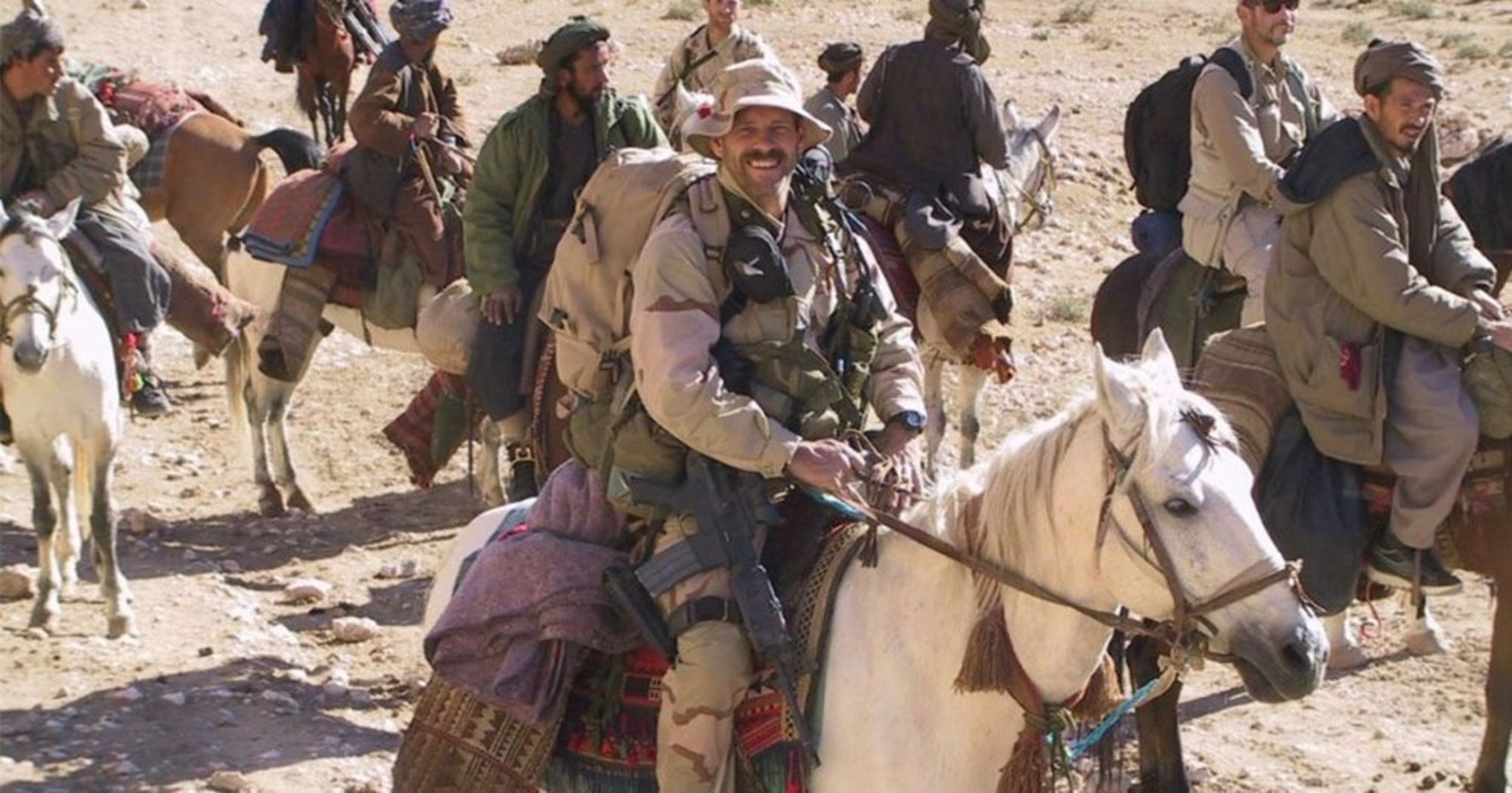Just five weeks after the horrible events that unfolded on 9/11 back in 2001, the United States answered. Coalition air forces were already hitting targets in Afghanistan, taking out terrorist training centers and key government installations. But on that day, the first Special Forces troops infiltrated into Afghan territory from Uzbekistan over the Hindu Kush mountains.
The men selected were from the 5th Special Forces Group (5th SFG) and they were tasked with conducting a classic SF mission. Infiltrate a denied country, coordinate with CIA Special Activities Division members on the ground, link up with resistance bands. Several of these crossed ethnic boundaries and were historic enemies. But they were loosely grouped into what was called the Northern Alliance, Afghan warriors who were fighting the Taliban.
There the SF A-Teams would train the Northern Alliance, supply them and while coordinating between the various groups, attack the Taliban by calling in airstrikes and accompanying the resistance fighters into combat.
The 5th SFG was the key component of Task Force Dagger along with the CIA’s Special Activities Division and the Night Stalkers of the 160th Special Operations Regiment (Airborne) along with a handful of Air Force Special Operations Combat Controllers. The pilots of the 160th said 5th SFG Commander, Colonel, later Lt. General John Mulholland are “the finest aviators in the world, bar none.”
Night Stalkers Fly Teams In Terrible Conditions:
The weather was so bad, it delayed the original infiltration planned for October 17 for two days. The Special Ops MH-47s flown by the 160th were flying at 20,000 ft. to cross the mountains, and several of the men became airsick because of the altitude. Visibility was near zero and the pilots had to deal with sleet, ice, wind, sandstorms, and enemy fire.
The first two SF A-Teams, known as ODAs (Operational Detachment Alpha) was 595, and 555. When the SF men alit off of the Chinooks, they were truly alone. The moment wasn’t lost on them. The mountains in Afghanistan were the same as they had been for centuries. The mode of transportation was on horseback. The roads …dirt.
The Commander of ODA-595, Captain Mark Nutsch recalled that the land was “rugged, isolated, beautiful, different colored stones and geographical formations, different shades of red in the morning as the sun came up.”
He described his infiltration area as “a canyon with very dominating, several-hundred-feet cliffs.” The SF men had no idea what to expect. Their counterparts were waiting for them and the ODAs were surrounded by armed militants. Although there were a few tense moments, the two sides quickly linked up.
The Famed Horsemen:
The SF teams quickly broke down into split teams and split even further into three-man teams. The Northern Alliance fighters traveled on horseback. The Americans soon found themselves on borrowed horses sitting in saddles much too small for American built SFers and riding horses that wanted to fight each other as much as the Afghans fought amongst their different factions. Most of the men had never ridden horses before.
Nutsch was one of the few men who had experience on horses as he grew up on a ranch. But even he was amazed at how fast the men on the teams adapted to this new but very old style of warfare. A Civil War and history buff, prior to deployment he studied cavalry battles of yore, never dreaming that one day he’d be leading one.
Nutsch requested lightweight McClellan saddles be airdropped for the US troops since the Afghan models were too small. In mid-November, they were airdropped in.
Secretary of Defense Donald Rumsfeld saw pictures of the SF men and briefed the press and the legend of the Horse Soldiers was born.
It was the first instance of U.S. troops riding into battle on horseback since January of 1942 in the early days of World War II. The U.S. Army’s 26th Cavalry charged a Japanese advance column on the march from Manilla in the Philippines. Today, a 16-foot, bronze statue of an SF Soldier on horseback, named De Oppresso Liber — the SF motto, “to free the oppressed”, the Horse Soldier, stands near ground zero in New York City, watching over the 9-11 memorial and honoring those first special operations teams that struck back at terror.
Combat Controllers Were Big Force Multipliers:
The AFSOC Combat Controllers really helped turn the tide for the Northern Alliance fighters. They were on horseback with just AKs and a handful of light machine guns going against the Taliban that had tanks, armored personnel carriers and heavy artillery, courtesy of the Soviet Union when they pulled out of Afghanistan in 1989.
In an interview with Army Times, retired Chief Master Sgt. Calvin Markham, who received a Silver Star for the operation, remembered that the controllers tried “to bring that close air support expertise with our air traffic control background, having multiple stacks of aircraft … from fighters to bombers overhead.”
“It annihilated the enemy,” he said, noting that this was the first time B52s had been used for close air support since the Vietnam War. “I think it really broke their will to fight. You kill 10, 15 enemy combatants on the battlefield at one time, I’m sure it’s a devastating blow to them, but when you’re talking about hundreds of enemy combatants losing their lives from one strike, it makes the other guys think about what they’re doing and that maybe they should retreat.”
In less than a month, 10 ODAs from the 5th SFG were operating in Afghanistan. The Special Forces men fighting alongside the Northern Alliance and with massive air support from B-52s, B-1Bs, and other platforms, decimated the Taliban. In less than two months, they had wrested control of the country away from the Taliban.
Then as Charlie Wilson had remarked a dozen years before, after the U.S. had helped to oust the Soviets from Afghanistan…”We fucked up the end game.”
Seventeen years later, U.S. troops are still fighting and dying there.
Photo: DOD
